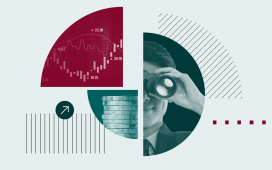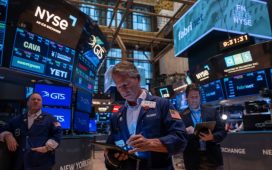The years 2008-2019 were extremely unusual by historical standards.
There has never been a period in the 300 years of Bank of England records where interest rates have been so low for so long. Looking forward, a generation of workers will now need to adjust to global interest rates that are up to five times higher than they were. Currently, estimate interest rates will settle between 4.5% and 5.5% – a range not seen since 2008 and certainly one more reminiscent of the 1980s and 1990s.
There are a couple of fundamental forces that point to a higher real equilibrium rate than we have seen in the recent past, most notably productivity growth and the climate transition. There are likewise a couple of other factors working in the opposite direction, such as demographics, greater economic volatility and high levels of government debt.
Taking all these factors into account, we expect real interest rates may fall back from current peaks but settle to a level 100-200 basis points higher than in the post-2008 world in the long run.
What’s Influencing Future Interest Rates?
1. Productivity Growth
There are good reasons to be a productivity pessimist and there is a vast body of research pointing to explanations for the slowdown we have seen. However, we believe recent productivity performance is a poor predictor of future performance, and that productivity is on the cusp of a generational improvement.
The key contributing factor is the recent explosion of generative artificial intelligence (AI) and its potential to revolutionise working practices. Just like other revolutionary, general-purpose, technologies, AI has the potential to bring about a radical transformation of the economy and the world of work.
2. Demographics
The impact of demographics is uncertain. On the one hand, falling working-age populations mean capital-to-labour ratios are likely to rise over time. As a result, not as much investment is required, putting downward pressure on real equilibrium rates.
We have seen this effect play out in the past decade, as the prospect of falling working populations has affected real returns in countries like Japan and, more recently, China. Likewise, rising longevity means people will spend more time in retirement, so households may accumulate a larger stock of savings before reaching retirement itself.
On the other hand, an ageing population means more people will transition from being savers to being spenders, putting upward pressure on real interest rates. Overall, we conclude the impact of demographics on rates is likely to be small.
3. Climate
Many countries have committed to decarbonise their economies over the next 30 years to hit their “net-zero” emissions targets by 2050. One implication of these commitments is that the size and nature of the global capital stock will have to change radically, with clean “green” capital replacing polluting “brown” capital relatively quickly. That transition could be costly. Any rise in the cost of capital could mean higher real interest rates too.
A New Inflation Environment
The past few years has brought several extraordinary events affecting markets and the global economy. Such disruptions to the normal functioning of trade and economies often result in a higher probability of extreme outcomes.
We may well see a rise in underlying inflationary pressure, and therefore a rise in the average policy rate required to hit existing inflation targets. Indeed, inflation targets themselves could come into question. And even if they aren’t raised de jure, central banks may be prepared to tolerate inflation deviations from target for longer, especially if the economic costs of hitting the inflation target rise. As a result, investors may require more compensation for inflation risk than they have in the recent past, causing average interest rates to rise.
However, we believe the new environment will be a more rational one for investors and savers, with safe assets yielding a reasonable rate and riskier assets not performing on the basis of their cashflow fundamentals – and not just because interest rates are low. It won’t be painless, and businesses reliant on low interest rates (zombie firms) could suffer, alongside borrowers in the short term. Ultimately though, higher interest rates mean yields on all types of assets should rise.
Shamik Dhar is chief economist at BNY Mellon Investment Management











